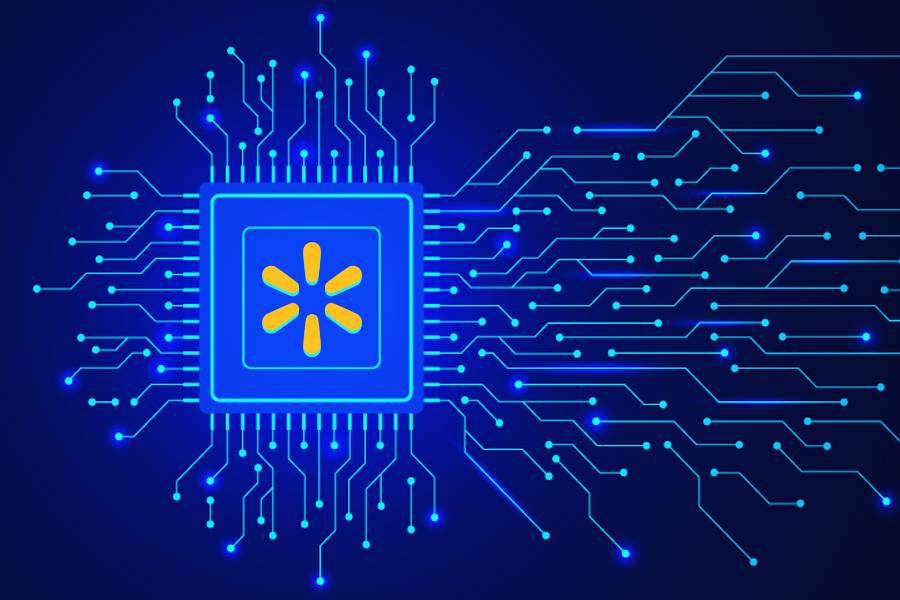Categories
Latest Posts
Tags
Advertising Amazon Amazon Advertising Amazon Experts Amazon Listing Optimization Amazon Marketplace Amazon News Amazon Prime Amazon Professional Sellers Summit Amazon Seller amazon sellers Amazon Seller Tips Amazon Seller Tools ASIN Brand Management Brands Buy Box Campaign Manager Conference COVID-19 downloadable Dynamic Pricing Ecommerce FBA FBM Holiday Season industry news Multi-Channel Fulfillment Optimize pay-per-click Pricing Algorithm Pricing Software Private Label Profits Repricing Repricing Software Revenue Sales Seller Seller-Fulfilled Prime Seller Performance Metrics SEO SKU Sponsored Products Ads Strategy
Get the latest insights right in your inbox
Resource | Blog

Walmart’s Next Chapter of AI: A Glimpse Into the Future of Shopping—or a Leap Too Far?
SUMMARY
Walmart’s bold new AI initiative could transform shopping as we know it, but will consumers embrace it? Explore what this shift means for brands, retailers, and the future of e-commerce.

Marissa Incitti
Walmart just unveiled its most ambitious AI initiative yet: a comprehensive, agentic AI ecosystem designed to transform the shopping experience from every angle. In what it calls their “next chapter of AI,” the retail giant is rolling out a four-part framework that reimagines how customers, suppliers, employees, and developers interact within its ecosystem.
At the heart of this initiative is Sparky, Walmart’s reaction to Amazon’s Rufus, but with a new twist. Sparky will become a task-based agent that completes entire workflows, rather than providing relevant products based on search terms. Think: “Help me build a summer wardrobe under $300 that fits my style” instead of typing in “women’s tank top.” The goal? To shift consumer behavior from keyword-driven browsing to fully guided, personalized task completion.
But Sparky is just one piece of the puzzle. Walmart’s full agentic AI framework includes:
- Marty: A supplier and advertiser agent that helps optimize listings, advertising, and supply chain decisions.
- Associate Agent: A tool that empowers Walmart employees with real-time support and decision-making assistance.
- Developer Agent: A system-building assistant to help streamline AI applications across Walmart’s infrastructure.
Walmart’s vision is bold. It puts pressure on competing retailers, as well as the brands and sellers that rely on retail marketplaces to reach consumers. If task-based AI becomes the norm, brands will need to find ways to embed themselves in those workflows. Showing up in a search result won’t be enough—they’ll need to be the answer to the task itself. A feat that seems too far to accomplish.
And the biggest question remains: Will consumers adopt this new way of shopping?

Maximize Visibility, Profitability, and Efficiency on Walmart
Join the leading AI-first pricing, advertising, and intelligence optimization platform for brands and marketplace sellers on Walmart and beyond.d costly fees with the only inventory-aware AI pricing solution.
Consumers Are Interested—But Cautious
There’s no doubt that AI-powered shopping assistants are gaining traction. During the July 2025 summer sales, usage of AI search assistants surged. But according to our 2025 Consumer Behavior Report, 61% of consumers still don’t use AI shopping tools at all.
This signals a key divide: while the technology is ready, mainstream adoption isn’t there yet.
Still, one consumer priority is abundantly clear: value and efficiency. In an era of rising prices and overwhelming product choices, shoppers crave simplicity. Tools that streamline discovery, reduce decision fatigue, and surface better deals are exactly what they want. That’s why Walmart’s vision is so timely and so promising.
But there’s one major hurdle standing in the way: trust.
The Trust Gap
AI is a give-and-take experience. To get better results, consumers must share more data. But when that data disappears into a black box, skepticism rises. According to our research, 72% of consumers express serious concerns about how their data is used in AI applications.
And their worries aren’t unfounded. Early AI experiences have already shown cracks. Amazon’s Rufus, for example, was publicly criticized in 2024 for recommending irrelevant or inaccurate products—like suggesting poor-quality items as the “cheapest” or endorsing running shoes no athlete would recommend.
These missteps matter. 33% of shoppers worry about irrelevant recommendations, while 29% fear being nudged toward products that don’t match their preferences or values.
For Walmart—and others building similar systems—earning and maintaining trust will be the ultimate test. AI shopping assistants must be not only smart, but reliable, transparent, and aligned with real human needs.

The Best Marketplace Optimization Now on Walmart
Unlock smarter pricing, advertising, and retail intelligence with the leading AI-powered optimization platform for brands and marketplace sellers on Walmart and beyond.
What This Means for Brands and Retailers
Whether consumers adopt AI shopping agents rapidly or gradually, the direction is clear: task-based shopping is coming. Brands need to prepare now.
- Optimize for intent, not just keywords. AI tools like Sparky are designed to fulfill broader missions. Ensure your product data, creative, and messaging clearly communicate how you solve consumer needs, not just what your product is.
- Stay agile. AI tools will prioritize relevance and performance signals. Brands that continuously optimize based on real-time data will win more placements in task flows.
- Double down on transparency. Consumer trust can make or break your presence in AI ecosystems. Focus on authentic reviews, clear data practices, and honest messaging.
Final Take: AI Will Redefine Retail But It Won’t Replace Human Behavior Overnight
Walmart’s agentic AI initiative is a seismic shift in retail technology. It has the power to make shopping more personalized, efficient, and intuitive. But like any innovation, success will hinge on how real people respond.
Some shoppers will embrace the convenience. Others will continue to prefer the joy of browsing, comparing, and deciding for themselves.
In the meantime, the retailers and brands that win will be those that prepare for both paths: delivering value through automation and continuing to build meaningful, trustworthy relationships.
You may also like
Get the latest insights right in your inbox
Thank you for signing up for our emails. You will receive a confirmation shortly.